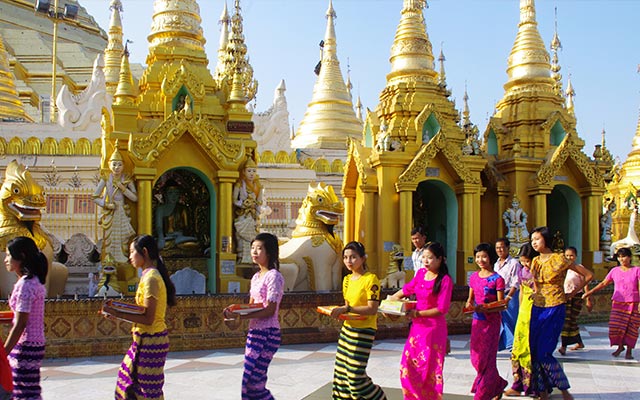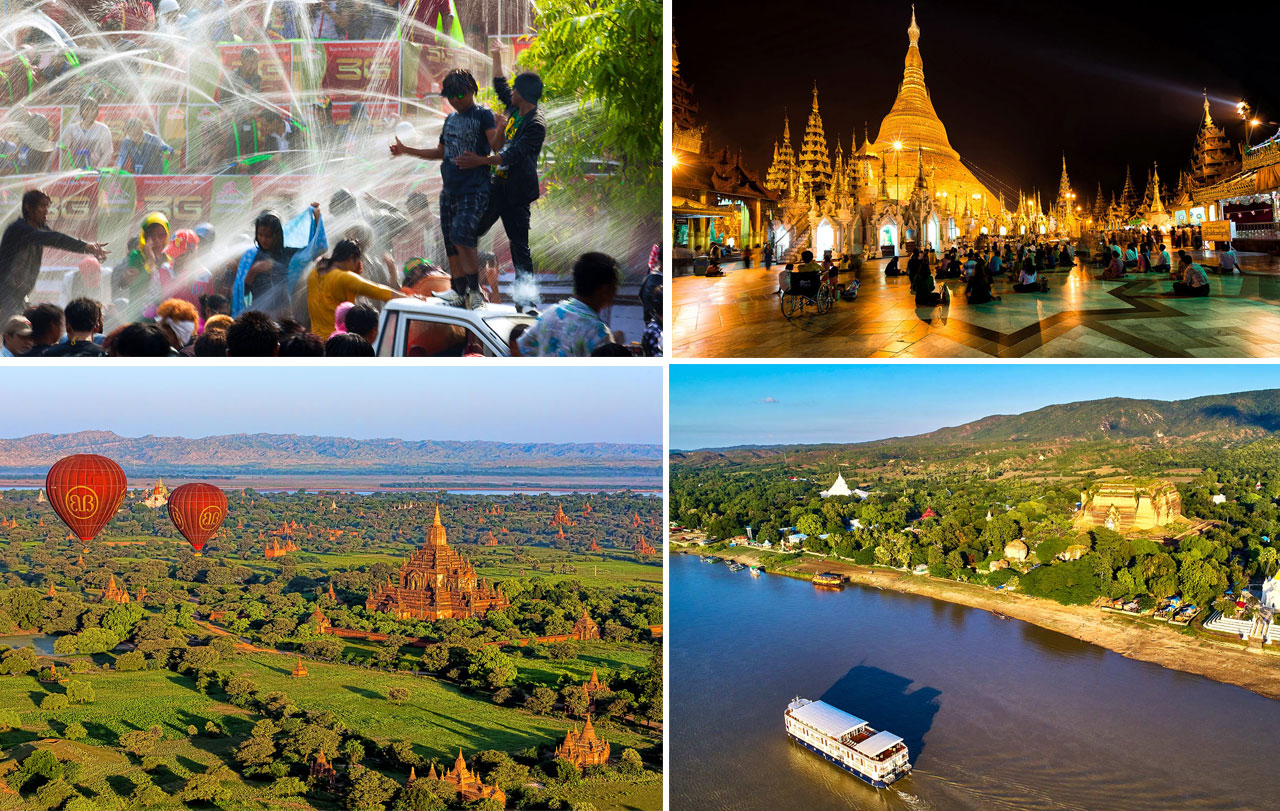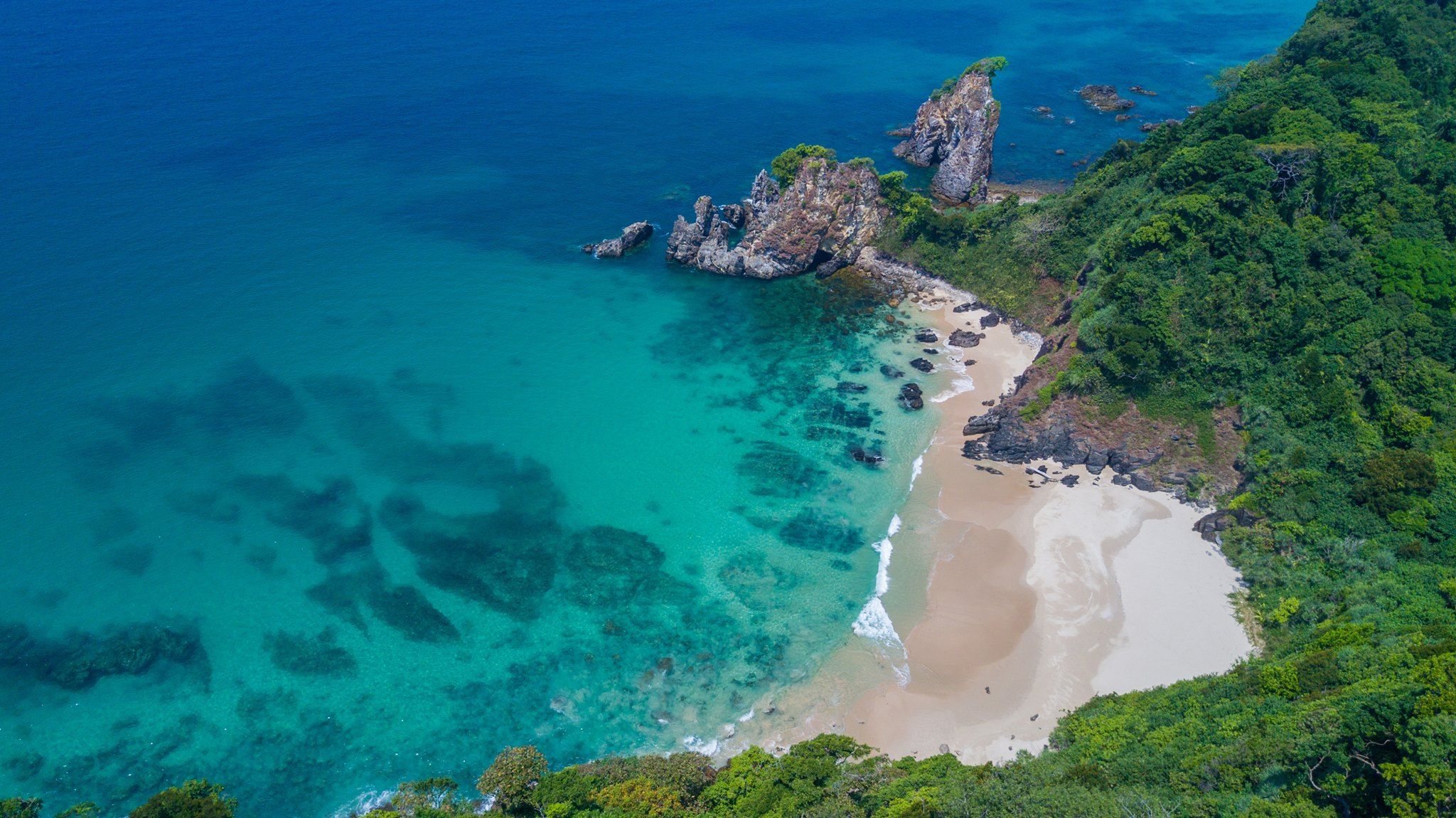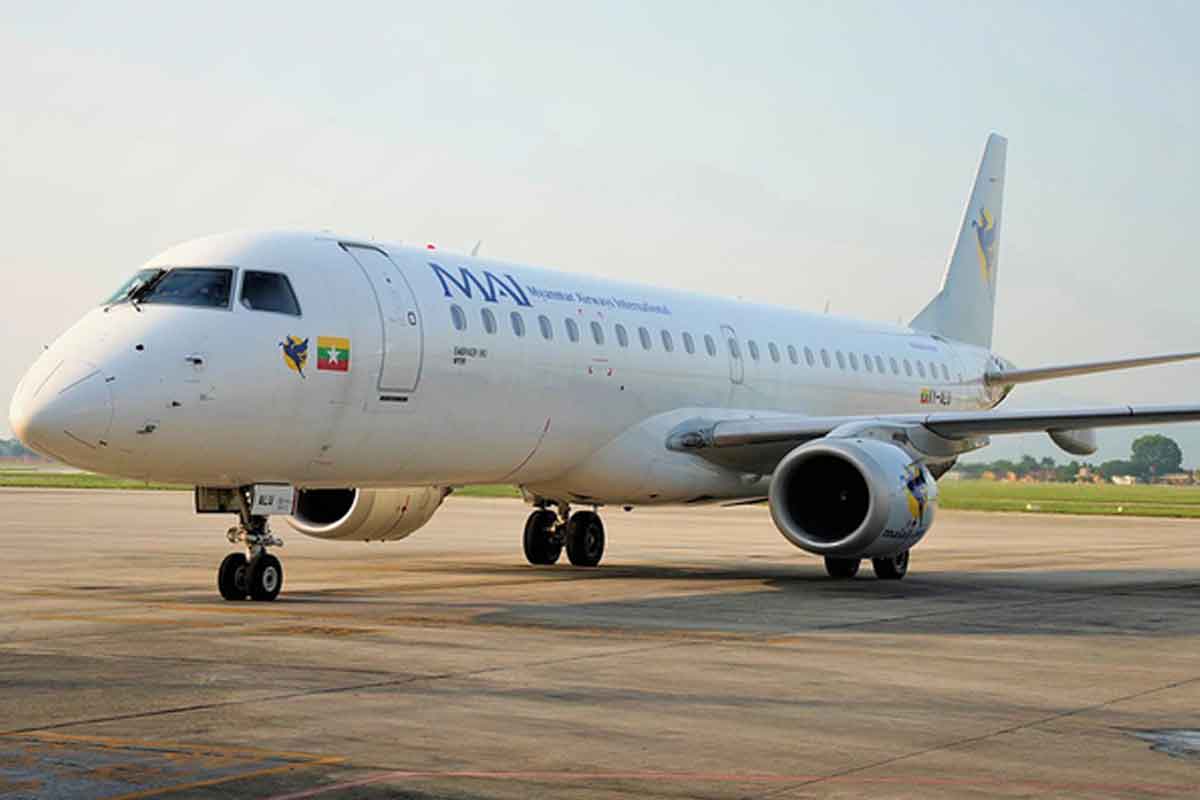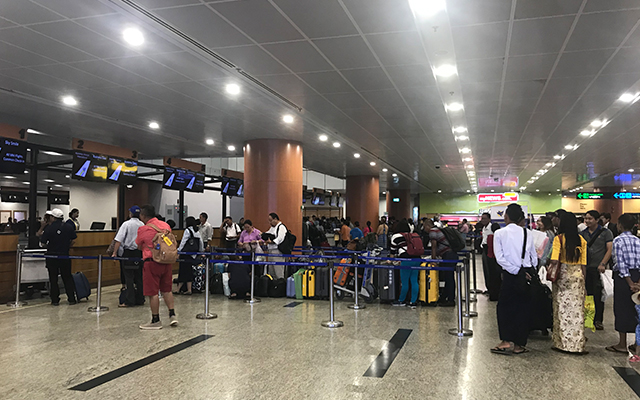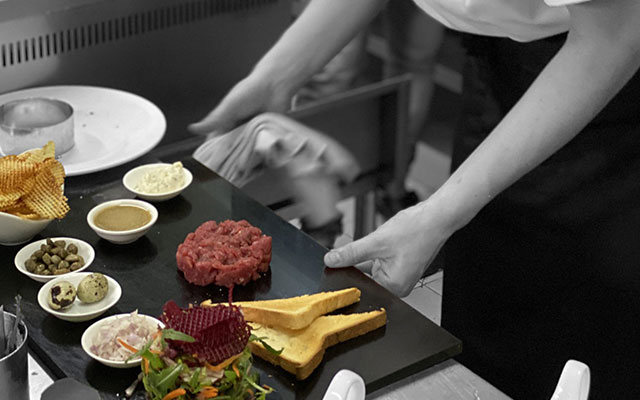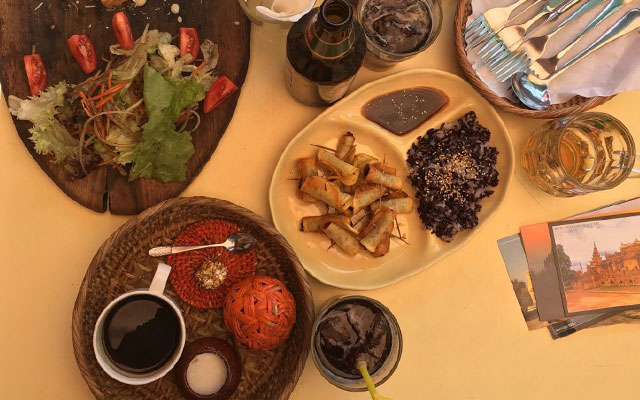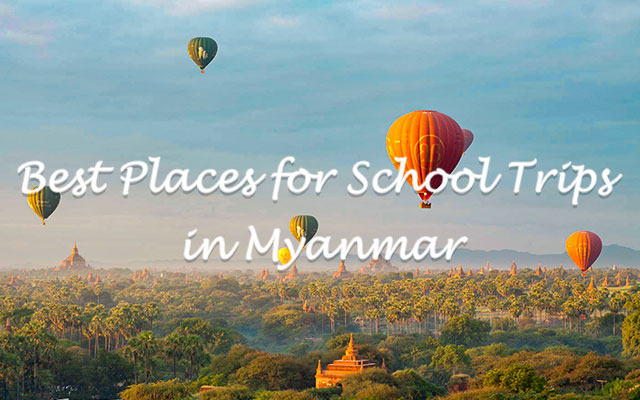Which language is spoken in Myanmar?
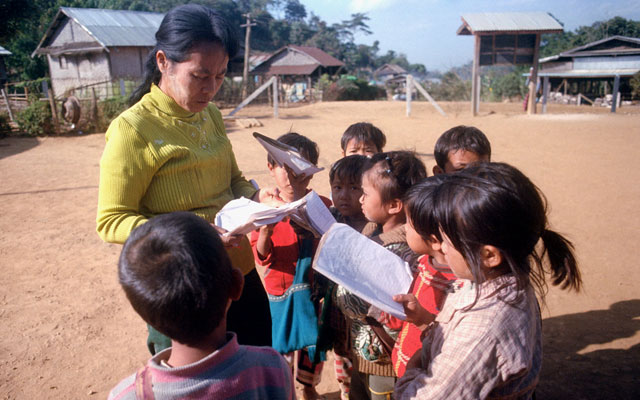
Which language is spoken in Myanmar
With the ethnic diversity of 135 groups, Myanmar has about 100 languages spoken throughout the country. They represent four major language families (Sino-Tibetan, Austro-Asiatic, Tai–Kadai, and Indo-European). If you are looking for which languages are spoken in Myanmar, please find the answer here.
Table of Contents
The official language of Myanmar
The official language of Myanmar is Burmese. Burmese is the mother tongue of millions of Bamar people – the biggest ethnic group in Myanmar. It is also spoken by the Mon ethnic minority group and some other minority ethnic groups in Myanmar. Therefore, Burmese becomes the most widely spoken language in the country. In addition, Burmese is spoken in Bangladesh, Malaysia, Thailand, and the U.S. The total Burmese-speaking population of the world is estimated at slightly above 33 million people (in 2017). Another 10 million people speak it as a second language, particularly ethnic minorities in Myanmar and neighboring countries.
Burmese language belongs to the Lolo-Burmese sub-branch of the Tibeto-Burmese branch of the Sino-Tibetan language family. The script used to write Burmese was developed in the 5th century from a southern Indian script. Burmese is taught in schools across the country and in the numerous monasteries dotting Myanmar. The language is age-oriented and includes the usage of honorifics.
Due to the influence of other languages which Burmese has been in contact with (such as Pali and Mon, the earliest groups to occupy Burma or European languages such as Portuguese, Dutch, English and French), the spoken language is significantly different from the formal written form of the language used in textbooks, formal writing, newspapers, fiction, and expository prose. The written language retains many Pali words and syntactic structures no longer found in the spoken language.
Other indigenous languages of Myanmar
Aside from Burmese language, many other languages are spoken including Shan, Karen languages, Kachin, Mon… Most of these languages use the Myanmar (Burmese) script.
Shan
The Shan language is spoken by the Shan people who live mainly in Shan State. It is also spoken in some parts of Burma’s Kachin state as well. The Shan language belongs to the Tai–Kadai language family. Approximately 3.2 million people speak the Shan language. Shan alphabet
Karen Languages
The Karen languages are a group of tonal languages spoken by about 2.6 million of the Karen people in Myanmar. The language is classified into three primary branches, namely the Pwo, Sqaw, and the Pa’o. The languages are written using the Burmese script. Karen alphabet
Kachin
A significant number of people of the Kachin State of Burma speak the Kachin or Jingpho language, a member of the Sino-Tibetan language family. About 900,000 ethnic Kachins speak the Kachin language in Myannar. Kachin alphabet
Mon
The Mon language, an Austroasiatic language, is spoken by about 750,000 Mon people living in Myanmar. Not all Mon people in the country speak this language since a significant number of them speak only Burmese. Most of the Mon speakers in Myanmar live in the Mon State of the country. The Katyin State and the Tanintharyi Region also has significant Mon speaking populations. Mon alphabet
Several other minority languages are spoken by the various ethnic communities living in Myanmar.
Foreign languages spoken in Myanmar
English is an important foreign language and people who study is highly promoted in Myanmar. From the end of the 19th century to 1964, English was taught as used as the primary language of instruction in the nation’s educational institutes. Then, Gen. Ne Win mandated educational reforms to “Burmese”, so Burmese is used as the primary language of instruction in schools across the country. English is taught as a secondary language by educated urbanites and the national government.
In major tourist areas, many people speak English so you shouldn’t have much trouble being understood. However, off the beaten path is another story as most of people only speak their language.
Useful Burmese phrases for travelers to Myanmar
Unless you’re in a tourist hotspot, English isn’t widely spoken in Myanmar. So, learning these essential Burmese phrases will help you to communicate with local people more efficiently.
Burmese Phrases for Greetings
| English | Burmese |
| Hello/Good morning! | Min gla ba |
| How are you? | Nei kaon la? |
| I’m fine | Ne kaon ba de |
| What is your name? | Na mal bal loe kall lal? |
| My name is… | Kya nau na mee… ba |
| Nice to meet you | Twe ya da wanta ba de |
| Good night!(when going to bed) | Eigh douh meh |
| Goodbye! | Thwa dau mal |
General Burmese Terms & Phrases
| English | Burmese |
| Help | Keh ba |
| Cheers | Aung myin par say |
| Where is the toilet? | Ein thar ka bal mhar lal? |
| May I take a photograph? | Da poun yai lo ya mala? |
| I don’t understand | Na ma le ba bu |
| Please | Kyeizu pyu yue |
| Thank you | Kyeizu tin ba de |
| You are welcome | Ya ba de |
| Yes | Ho de |
| No | Ma ho bu |
| Excuse me (getting attention) | Ka mya? |
| I’m sorry | Taung pan par tal |
| Bill/cheque | Sin meh |
| Do you speak English? * | In glei za ga go pyaw thet de la? |
How to Address Others?
It’s polite to address a person based on their seniority and age in Myanmar.
| English | Burmese |
| Older males | U |
| Older females | Daw |
| Younger males | Ko |
| Younger females | Ma |
| Uncle: | U lay |
| Aunty | Daw gyi |
| Big brother | A ko |
| Younger brother | Maung Lay |
| Older sister | A Ma Gyi |
| Younger sister | Nyi Ma Lay |
Burmese Phrases for Shopping/Haggling
When you’re shopping/haggling for a fair price, it’s helps to know the following phrases and numbers:
| English | Burmese |
| How much? | Be lau le? |
| Very expensive: | Zei mya de |
| Can you reduce the price?: | Nae nae htat shot pay par oo |
| One | Tit |
| Two | Hnit |
| Three | Thone |
| Four | Lay |
| Five | Nga |
| Six | Chout |
| Seven | Khoon nit |
| Eight | Shitt |
| Nine | Ko |
| Ten | Tseh |
Some interesting facts about Myanmar Language
How many languages and dialects are spoken in Myanmar?
There are a total of 111 languages spoken by the people living in Myanmar. Among them, the top language groups are
- Burmese – spoken by 33 million
- Shan – spoken by 3.2 million
- Karen – spoken by 2.6 million
- Chin – spoken by 780,000
- Mon – spoken by 750,000
- Rakhine – spoken by 730,000
- English – spoken as a second language in Myanmar.
Is Myanmar language difficult to learn?
The fast answer is pretty hard to learn Burmese. The slow answer is that it would take some time to unpack. Vocabulary – Burmese has a lot of loans words from English so this can help speed up your language learning. Grammar – The grammar is subject-object-verb unlike English which therefore takes some getting used to.
Is English spoken in Myanmar?
Myanmar English is the register of the English language used in Myanmar, spoken as first or second language by an estimated 2.4 million people, about 5% of the population (1997).



